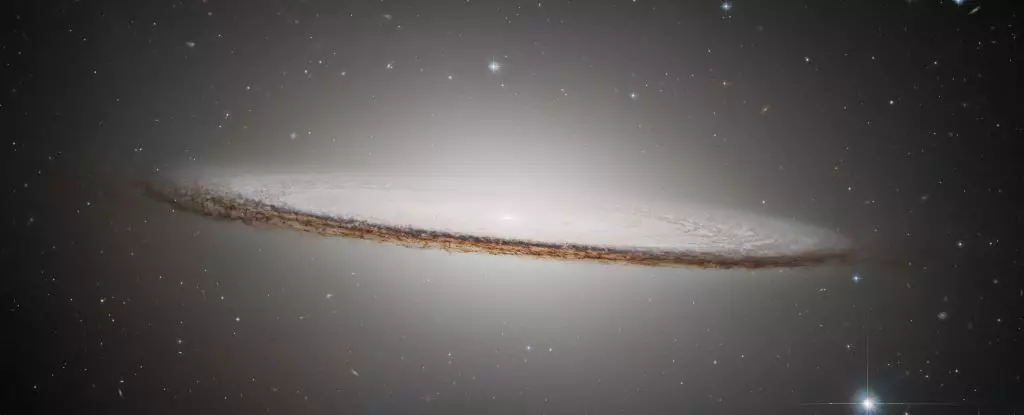Among the many galaxies that grace our night sky, the Sombrero Galaxy, scientifically cataloged as Messier 104, stands out as a captivating enigma. Situated approximately 31 million light-years from Earth within the constellation Virgo, this cosmic wonder is anything but ordinary. Its peculiar disk-like structure, illuminated by a brilliant core, gives it an unmistakable appearance that ignites the imagination of both professional astronomers and stargazers alike. The very essence of the Sombrero Galaxy challenges conventional classifications, with its unique blend of spiral and elliptical features creating a visual spectacle that is both fascinating and perplexing.
Unveiling a Cosmic Brim
What sets the Sombrero Galaxy apart is the intricate web of thick dust lanes that encircle its galactic plane. These features not only enhance its aesthetic appeal but also offer insights into the galaxy’s composition. The dust rims evoke the image of an ornate hat, giving it the charming nickname “Sombrero.” This cosmic border has intrigued scientists, prompting them to explore what this artistry of dust reveals about the galaxy’s origins and evolutionary timeline. The recent imaging advancements, enabled by Hubble, have illuminated these features further, presenting striking details and a myriad of stars faintly twinkling in the mosaic of the cosmos.
The Curious Case of Star Formation
Interestingly, despite its brilliance and density, the Sombrero Galaxy is not particularly prolific in star formation. Producing, on average, a mere single solar mass of stars annually is rather unimpressive when compared to other galaxies bustling with stellar activity. This paradox raises questions about its lifecycle and the factors that have led to its current state of relative stagnation in star creation. Observations suggest that the juxtaposition of its bright central bulge and clumpy dust might play a role in regulating star formation processes, presenting an exciting avenue for future research.
Contrasting Features and Evolutionary Insights
The galaxy’s shape further complicates its classification. With a bright central bulge reminiscent of elliptical galaxies and spiral structures woven into its fabric, the Sombrero defies neat categorization. Its near edge-on orientation presents challenges for astronomers seeking to understand its dynamics and the influence of the supermassive black hole at its heart, estimated to harbor a mass of around 9 billion solar masses. This central black hole serves as a significant player in the galaxy’s gravitational tapestry, influencing the motion of stars and gas within its vast expanse.
A Symphony of Observation and Wonder
The beauty of the Sombrero Galaxy lies not only in its appearance but also in the joy it brings to those who observe it. From amateurs wielding telescopes to seasoned astronomers analyzing data from the James Webb Space Telescope, the galaxy continually inspires a sense of wonder and discovery. Each new technique employed in studying its complexities adds layers to our understanding, making it a prime subject for ongoing astronomical exploration. As new images are released enhancing our view of this cosmic marvel, the Sombrero Galaxy reminds us of the shared human experience of curiosity and admiration for the universe that envelops us.


Leave a Reply